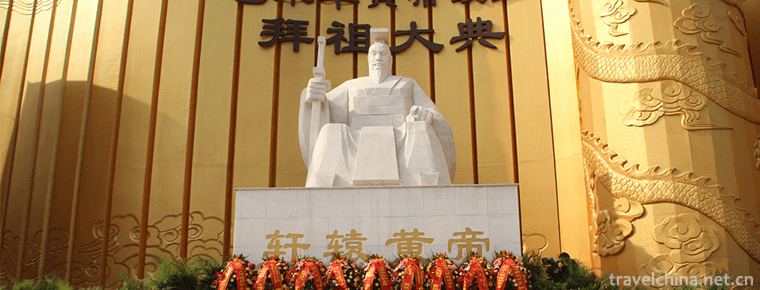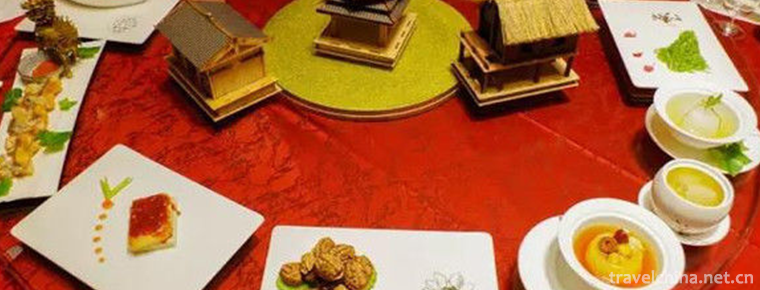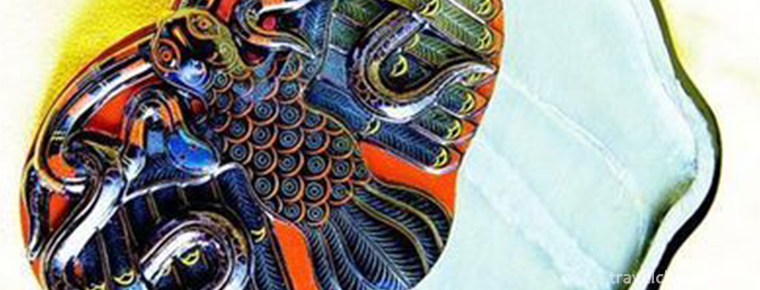Primitive Pottery Making Skills of Li Nationality
Primitive Pottery Making Skills of Li Nationality
The primitive pottery making technique of Li nationality, the traditional handicraft technique of Changjiang Li Autonomous County, Hainan Province, is one of the national intangible cultural heritages.
The primitive pottery-making techniques of the Li nationality have a long history. The primitive pottery-making techniques of the Li nationality appeared in Hainan six or seven years ago before archaeological discovery. After the Eastern Han Dynasty, the primitive pottery-making techniques of the Li nationality were recorded in the history books.
historical origin
The pottery-making technology of Li nationality, discovered from archaeology, should exist in the prehistoric pottery-making history. Archaeologists have found pottery with geometric prints in Sanya and Lingshui. Its history can be traced back to the Neolithic Age.
The emergence of Chinese pottery has a history of about 10,000 years. In Hainan, according to archaeological excavation materials, Hainan's pottery has a history of at least 6,000 years. Documents also contain relevant records. In the history books after the Eastern Han Dynasty, the activities of Li's ancestors (Li people) in Hainan have been recorded. Pottery making had already been spread to Hainan Island at that time. The Song Dynasty's Zhubo Zhi recorded that Li people "used earth as kettle and ladle as utensil", and so far the earthen kettle has been used between ladles. Ma Duanlin, Yuan Dynasty, recorded in the General Examination of Documents: "The pottery is the kettle and the pottery is the ladle for utensils". The Qing Dynasty Daoguang's "Qiongzhou Prefecture chronicle. Haili chronicle 5" states: "earthen kettle for utensils, ladles." It can be seen that the primitive pottery of Li nationality has been handed down from generation to generation. Gu Yanwu of the Qing Dynasty also recorded Li people in the Book of Diseases in the Country of the Prefecture under Heaven: "Xuan Ji wooden cloth, pottery is the kettle."
In The Li Nationality of Hainan Island, the modern German anthropologist Stubo made a special description of the Li Nationality's pottery: "Using opaque grey-black clay to make simple pottery, such as wine urns, pots, casseroles, plates, etc.
Process characteristics
The shape and appearance of Li pottery are proportionate, with appropriate thickness, primitive simplicity, dignified and thick, compact structure, smooth surface, no sand, cracks and holes. Impurities and other accessories, red, black, grey, brown, purple and other colors, earthenware on the natural formation of a variety of fantastic, freehand brushwork patterns and patterns, intriguing, with a strong ornamental.
Inheritance and protection
Inheritance value
The primitive pottery-making techniques such as clay bar and tray method are still inherited in Dapo area of Shilu Town, Changjiang Li Autonomous County, Hainan Island, which has an important enlightenment for the study of prehistoric pottery history. The Li nationality retains the original form and characteristics of pottery making and truly reproduces the original process of pottery making, which is the "living fossil" of ancient Chinese pottery making.
Inheritance status
With the development of society, the improvement of living standards and the convergence of social culture, porcelain, glassware, metal ware, plastic ware and other substitutes for pottery have entered daily life, and the production of Li ceramics has gradually shrunk, especially during the "Cultural Revolution", almost all production has been stopped. There are few Li artists who know how to make pottery now. The pottery making technology is on the verge of extinction. It is urgent to take effective measures to ensure its transmission.
Inheriting characters
Yang Bailiang, female, Han nationality, born in November 1935, is a native of Baotu Village, Shilu Town, Changjiang Li Autonomous County, Hainan Province. Yang Bailiang studied pottery making with his mother in his childhood. In decades of practice, Yang Bailiang's pottery making skills were very mature. With clay men as materials, he created pottery using simple tools such as wooden poles, wood white, cypress, wood scrapers and bamboo knives, clam shells, drilled bamboo sticks, and bamboo mats. The types of utensils became more and more diverse. Li's pottery making skills have always been "handed down to women but not to men". In the past, women did not even allow outsiders or men to watch when making pottery. The so-called "female pottery men do not approach". Yang Bailiang passed all his skills to his daughter Huang Yuying and granddaughter-in-law Wen Afen. In June 2007, Yang Bailiang was selected as the representative successor of the first batch of national intangible cultural heritage projects and declared in Changjiang Li Autonomous County, Hainan Province.
protective measures
In 2008, Sanya organized relevant personnel to conduct extensive and in-depth field investigation on the primitive pottery making skills of the Li people. By means of writing, recording, photography, video and other multimedia means, the primitive pottery making skills of the Li people and their pottery articles were comprehensively and systematically recorded, and relevant materials were excavated and sorted out, archives and databases were established.
On March 21, 2012, Sanya intangible cultural heritage protection center was officially set up. Since then, special funds have been allocated every year to support its conservation and inheritance, holding Li Tao skills training courses, and establishing Li Tao seminars and Exhibition halls. Publishing a large picture album of Tianya Earthpottery Art, filming a documentary of "Li Nationality's Primitive Ceramic Art" and collating relevant literary materials.
social influence
Domestic influence
More and more hotels, hotels and well-known large enterprises have come to buy "Li Tao" as a display of Arts and crafts or as a gift to guests. Nearly 10 well-known Chinese enterprises have come to discuss acquisition or cooperative development.
Important exhibition
On December 12, 2015, the China (Hainan) International Tropical Agricultural Winter Fair was held in Hainan International Convention and Exhibition Center. The primitive pottery making skills of Li nationality were displayed.
On April 18, 2018, one of the key activities of the Changjiang Branch of Hainan "March 3" was held at the Li Pottery Experience Hall of Baotu Village. The primitive pottery making skills of the Li people were displayed.
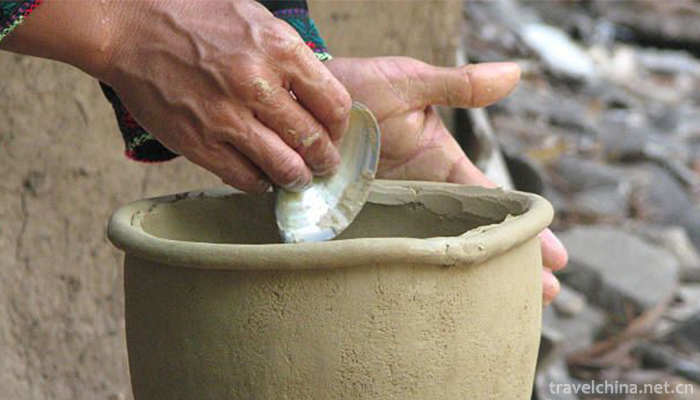
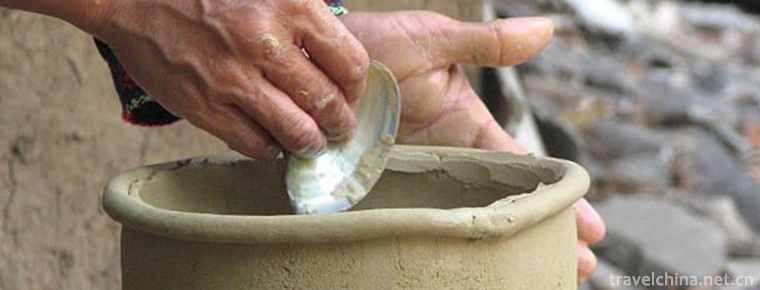
Primitive Pottery Making Skills of Li Nationality
-
Hometown of Huang Di
The scenic spot of Huangdi's hometown is located in Xuanyuan Road, Xinzheng City, Zhengzhou City, Henan Province. It is the residence of Xiong clan recorded in the history
Views: 185 Time 2019-01-18 -
Eight Immortals
Raw materials: japonica rice, yellow millet, soybean, red adzuki bean, mung bean (fried with five flavors) 75 grams each. Fennel (washed) 150 grams, dried ginger, stir-fried white salt 30 grams each.
Views: 158 Time 2019-03-27 -
Asil Lysi
"Asr" is the abbreviation of "Asru Winder" in Mongolian, and its translation is of great significance. Asr is a kind of Mongolian court music, which has a unique national style and
Views: 236 Time 2019-03-28 -
Daur Ruzhigle Dance
"Luzhigle" is a representative folk dance of Daur nationality. It varies from place to place, including "Alhambo", "Langtudabe", "Hakumai", "Hagen Melger&q
Views: 123 Time 2019-04-22 -
Block door La shou men
Stopper Gate is one of the traditional Chinese boxing schools. It originated in Shaolin and was introduced to Tianjin in the early Qing Dynasty. It originated in Sichuan. It was the earliest southern
Views: 226 Time 2019-05-10 -
Lacquerware Decoration Techniques
Chu-style lacquerware decoration is a traditional folk lacquerware decoration technique. By the Spring and Autumn Period and the Warring States Period, the production technology
Views: 100 Time 2019-06-10 -
Sacrifice to Emperor Shun
Modern Shun Emperor Mausoleum sacrificial activities take the theme of "respecting ancestors and patriotism, inheriting civilization, uniting people's hearts and promoting development". The
Views: 135 Time 2019-06-16 -
Wudu Alpine Opera
Wudu Alpine Opera, also known as Alpine Opera, is one of the two unique local operas in Gansu Province. In 2008, Wudu Alpine Opera was selected as the second batch of national intangible cultural heri
Views: 183 Time 2019-06-30 -
Peking University
Founded in 1898, Peking University was first named as Beijing Normal University Hall. It was the first national comprehensive university in China and the highest educational administrative organ at th
Views: 255 Time 2019-08-30 -
Chengdu University
Chengdu University, established in 1978 with the approval of the Ministry of Education, is a comprehensive University jointly built by Sichuan Province and Chengdu City. It is a key comprehensive univ
Views: 312 Time 2019-08-31 -
Liubeichi Park
Liubeichi park is located at No.4 Minjiang East Road, Yibin City, with an area of 238.18 mu. It is a national AAAA tourist attraction. It is a famous scenic spot and a key Park in Sichuan Province.
Views: 163 Time 2020-10-16 -
Population of Dazhou
By the end of 2019, the registered residence population of Dazhou was 6 million 589 thousand and 400, with a permanent population of 5 million 741 thousand, and the urbanization rate of permanent residents was 47.14%. The annual death rate was 46
Views: 365 Time 2020-12-20
